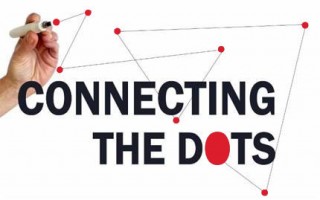
Planning is fundamental to any business. Every successful business consistently reviews its business plan to make sure it continues to meet its needs. But how often is technology included in a company’s future strategy? Most recognize the importance of technology, but still look at the upfront cost rather than focusing on the big picture.
Connecting business vision with technology requires a sound business plan and an understanding of your company’s business objectives. It’s never too late for a company to evaluate its technology needs and begin mapping out a comprehensive strategy.
Ultimately, your business plan should include technology that is designed for change. Without a well-defined strategy, businesses will make poor buying decisions which will result in implementing ineffective tools. Be sure your technology solutions are able to grow in the most proficient and cost effective way as your business needs grow and change.
First, decide where you are and where you want to be. Determine how you will use technology to manage and support your future goals.
Then, take a look at business operations, consider which functions require or could benefit from technology such as communication with your customers, order fulfillment, inventory and supply management, and internal communication. The alignment between business processes and IT is a key issue as it directly impacts an organization’s ability to meet business needs.
Putting the right systems in place for your business and understanding how to take advantage of an IT infrastructure will maximize results and simplify future technology enhancements. For example, implementing a robust Internet Protocol (IP) network makes it easier to employ new technologies, such as VoIP. With the ground work already in place, a company can utilize VoIP to help lower calling costs and provide advanced phone-based capabilities.
Technology benefits are not always defined in revenue. It’s difficult to measure the value. It’s important to consider organizational proficiencies.
Ben Franklin coined the famous expression… “Time is money!” It’s a fact that a well-planned infrastructure with advanced collaboration tools will improve your bottom line. We all know that systems degrade over time. A properly maintained computer system will provide you with higher speeds. If your system is slower than molasses, it is going to impact overall productivity.
Take into account employee morale. There is no getting around it, the tech savvy employee of today expects to work with up-to-date technology. When these expectations are not met, technology can have an impact on job satisfaction. Clearly, it’s safe to say, that employee morale can be hindered by the technology solutions an employer provides.
And what about customer service experience and supporting better relationships with key partners? Technology is a cost of doing business, and an opportunity to do additional business!
Given these points, I think you will agree that technology redefines opportunities. As we mentioned earlier, business conditions and technology are constantly changing. Perhaps you’ve had to make adjustments to your business goals and vision. Incremental technology planning and monitoring is essential to ensure that systems live up to their full potential.
How do you know that your technology investment is providing the value required to realize your business goals and vision? Transforming vision into reality often requires outside expertise. Why not call us today… we’d love to help you connect the dots!
First published in our May 2016 IT Radix Resource newsletter
[code-snippet name=”hiding-blog-image”]


